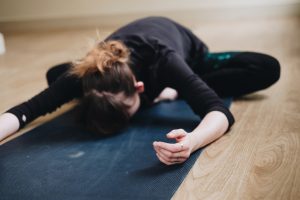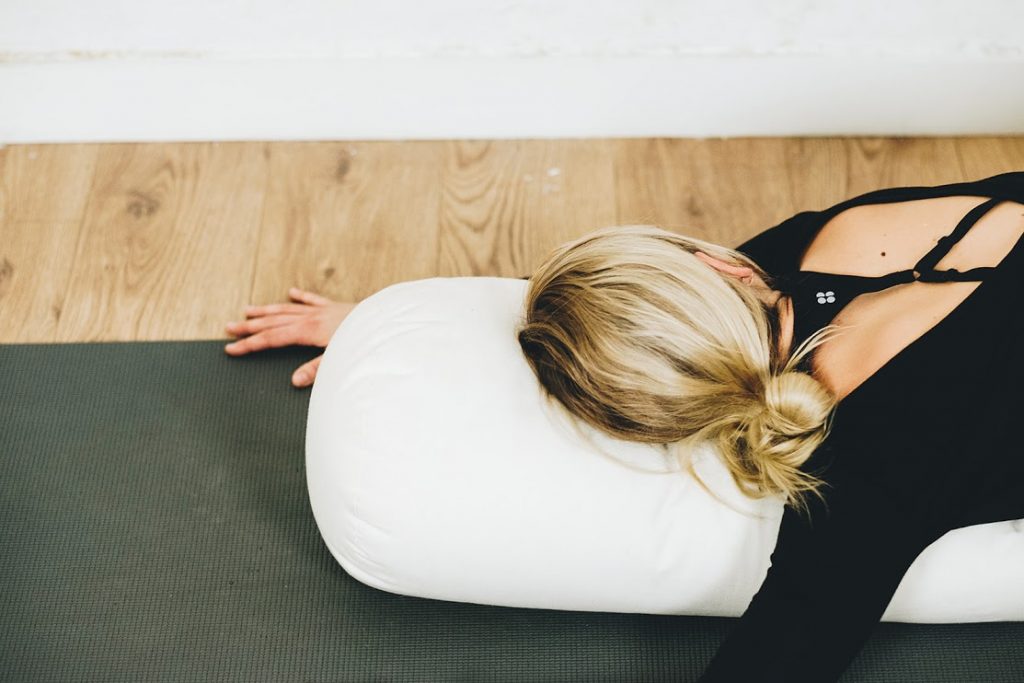“I think our notions of what counts as radical have changed over time. Self-care and healing and attention to the body and the spiritual dimension—all of this is now a part of radical social justice struggles. That wasn’t the case before.
And I think that now we’re thinking deeply about the connection between interior life and what happens in the social world.”
– Angela Davis, 2016
I can feel the impact of 2020 in the deepest parts of myself. No matter how much I have adapted my routines, relationships and mindset around Covid-19 I am deeply aware of all the personal and collective stress, disruption, grief, anxiety, depression and uncertainty that has taken up residency in my body and psyche –– my own, and everybody else’s.
So I’m taking refuge in Rest. There is very little we can reclaim with certainty right now, but I have found centring rest gives me a point of inner anchorage from which to navigate both our unprecedented times and the seasonal changes.
 Nourish is also resting up –– at least, our offerings are. The high interest in Nourish’s upcoming Leading Simple Yoga Nidra course, led by the truly magnificent Theo Wildcroft, struck a very joyous chord. After the first one booked out so quickly, I’m very pleased to say that we have added another Yoga Nidra course starting in February! For those of you seeking community respite in the meantime I am thrilled to be leading a couple of extended Rest, Rest, Rest practices over the coming months.
Nourish is also resting up –– at least, our offerings are. The high interest in Nourish’s upcoming Leading Simple Yoga Nidra course, led by the truly magnificent Theo Wildcroft, struck a very joyous chord. After the first one booked out so quickly, I’m very pleased to say that we have added another Yoga Nidra course starting in February! For those of you seeking community respite in the meantime I am thrilled to be leading a couple of extended Rest, Rest, Rest practices over the coming months.
Alongside rest based offerings, we have lots of lovely other workshops and trainings in our calendar for the next few months. This includes our Teaching Inclusive Yoga training in the new year (which also tends to book up quickly, so if you are interested then I recommend booking on or getting in touch to find out more. As well as our foundational flexible delivery 200-hour yoga teacher training which runs throughout the year.
In honour of Nourish’s Rest based offerings, but also as a resource to dip into as we creep into Autumn, and possibly government or self-imposed isolation, this blog is dedicated to All Things Rest. Rest in the context of yoga, self and community, but also as a journey from the physiological processes to rest as radical, anti-capitalist (in)action.
Yoga Practice as Rest Practice
Resting is one of life’s things that is easier said than done. However, in many ways yoga and rest practices complement each other, so here are some ways to explore adding a more restful flavour to your personal yoga practice, or classes if you teach.
The Intention to Rest
Intentions help to ground or focus our yoga practice. Setting the intention to honour rest can not only bring us deeper into ourselves but can also help us connect to bigger purposes. Rest soothes the body, mind and spirit, but it also makes engaging with and navigating the world more manageable and even joyful. Rest can lie at the crux of the intersection between honouring myself and serving my community.
Intentions alter how we practise – how does it feel to heed the body’s need over the mind’s wants? What form might my sun salutations, in honour of rest, take?
The Breath and the Physiology of Rest
From a physiological standpoint, the breath is one way that we can influence our nervous system to facilitate rest.
 The branch of the nervous system associated with rest is the parasympathetic nervous system (PSNS), AKA the ‘Rest-and-Digest’ state, (counterpart to the sympathetic nervous system, AKA ‘Fight-or-Flight’). The primary nerve of the PSNS is the vagus nerve, famed for its length and sprawl, connecting the brain to heart, lungs, and gut. In general, we have little to no control over the processes of the PSNS and SNS; however, influencing the breath has been linked to vagal nerve stimulation, and therefore our rest response.
The branch of the nervous system associated with rest is the parasympathetic nervous system (PSNS), AKA the ‘Rest-and-Digest’ state, (counterpart to the sympathetic nervous system, AKA ‘Fight-or-Flight’). The primary nerve of the PSNS is the vagus nerve, famed for its length and sprawl, connecting the brain to heart, lungs, and gut. In general, we have little to no control over the processes of the PSNS and SNS; however, influencing the breath has been linked to vagal nerve stimulation, and therefore our rest response.
In this review paper, the argument is made that the physical and mental benefits gained from practising yoga and other contemplative practices are a result of the vagal nerve stimulation that occurs through breath modification. It’s impossible, and in my opinion pointless, to try and pinpoint exactly why and how our yoga practices affect us, but the paper offers valuable insight into one of the mechanisms at play.
Pranayama for Rest
We may turn to specific pranayama practices, such as three-part breath or breathing to specific counts; however, any breath pattern that slows and deepens the breath, particularly lengthening the exhale, can help to engage the PSNS.
Above all, if you choose to work with the breath, find a way of breathing that feels comfortable for you. Often the benefits ascribed to certain pranayama practices are generic and prescriptive, working for some people but not others. Holding the breath or working with fixed ratios can end up triggering a stress response. For those of us, or our students, who have altered or sensitised nervous system responses, working directly with the breath should be approached gently and slowly, if at all.
Instead of traditional pranayama practices, sighing or blowing out the exhale through gently pursed lips are accessible and can be easily integrated into asana. However, during Covid times please respect those you are sharing a space with and practise any pranayama that requires strong or open mouth exhales in a private space, as opposed to public yoga classes. There are many different ways to access our rest response, and the breath may change without us having to focus or alter it directly.
Resting in Asana
Yin and restorative styles of yoga are the obvious, but not the only, way of tailoring asana to rest. Forcing the body to be still, whilst the mind whirs on, in the name of relaxation is unrealistic and can be triggering, particularly if you are anxious, restless, or a trauma survivor.
 Adopting an embodied approach to asana tends to slow us down, creates more space for being with the breath, and allows us to soften our edges through freer movement. From here, adding a few supported poses, using bolsters and pillows, might feel more welcome –– although just letting the body move softly and consciously can be nurturing enough.
Adopting an embodied approach to asana tends to slow us down, creates more space for being with the breath, and allows us to soften our edges through freer movement. From here, adding a few supported poses, using bolsters and pillows, might feel more welcome –– although just letting the body move softly and consciously can be nurturing enough.
Bed yoga, where you practise gentle poses from the comfort of bed, is also a nourishing and accessible way to build rest into your asana practice.
Resting the Mind: Savasana, Meditation and Yoga Nidra
Savasana, meditation and Yoga Nidra are unique practices in and of themselves, but they can be approached collectively as ways of finding a deeper or mental rest. The biggest challenge to deep rest in turmoil times, and this is true of meditation practices is catching a mental break.
Savasana is in many ways the natural rest point of a yoga practise, and therefore a moment to emphasise in your yoga practise. Be intentional about rest in savasana by using props such as blankets and pillows, or even getting back into bed (no matter what time of day). Often we are told to avoid sleep, daydreaming or mind wandering in our savasana (and meditation) but all of these are states of rest that you might welcome is you are struggling to unwind.
For some meditation and mindfulness practices are a welcome solace right now, and for others we might forego them entirely, as they can be mentally confronting. We may also find that adapting our physical practices generates more mindfulness as a byproduct.
Yoga Nidra is my rest practise of choice if I am in deep need of a mental unhook, and it is also a rest offering that I deeply enjoy sharing as a teacher. Theo has some excellent resources and recordings on her website if you would like to explore and experience this practice.
Rest in Community
Rest feels personal, because when we rest we are honouring the weary and overwrought aspects of ourselves. However, increasingly I have been contemplating the role of rest in community and how self-care can intersect with community care.
Community is a bedrock of Nourish and is an integral part of how we push back against the aspects of contemporary yoga that replicate the capitalist-patriarchal society that it has evolved in during recent times. Our commitment to community is also a way to support and foster greater diversity in yoga spaces.
Communal rest is oftentimes inherent to yoga as rest practice; every time we take savasana at the end of a class we have attended (physically or virtually) we are embracing collective rest. Resting in held spaces, supported by the facilitator as well the people we share the setting with, can not only take us deeper into our own rest but can also be a way to embrace how community action and activism benefits from these moments of collective inaction.
Rest as Resistance: The Politics of Time Out
“Caring for myself is not self-indulgence, it is self-preservation, and that is an act of political warfare.”
– Audre Lorde, A Burst of Light
It is consistently the work of Black American activist feminists who are broadening my ideas of how significant the intersection of self-care and community care is, and the role care plays in radical change.
Most recently, I am embracing the work of theologian, artist and activist Trisha Hersey, founder of the Nap Ministry. She emphasises not only the spiritual dimensions of resting and napping, but also how napping is anti-capitalist (for these reasons, she favours the term soul care over the commercially appropriated self-care).
Hersey’s work draws on the premise that when we are resting we are not consuming. When we choose rest over work we are acknowledging that our self worth is not synonymous with work or external experiences. When we foster a culture of rest, not just for ourselves but in our communities, we are also extending an invitation to others to resist the toxic grind of capitalism.
The experiences of Lorde, Davis and Hersey are very much rooted in the history of African-American enslavement and anti-Blackness in the US, and that is something I respect in my own engagement with self-care as political when drawing on their work. Honouring the specific cultural roots, particularly when they come from historically marginalised peoples, is essential to avoid appropriation.
 The fundamentals of rest, however, and the recognising the value of care for ourselves, which encompasses our physical, mental and spiritual health, and how this intersects with the communities, from families to allyship, and from personal plights to global and climatological health, that we want to show up for in some way –– because we care –– is not bound to a specific person or practice. Just as the sense of unity, integration or wholeness we may access through our yoga practice isn’t an experience exclusive only to yoga.
The fundamentals of rest, however, and the recognising the value of care for ourselves, which encompasses our physical, mental and spiritual health, and how this intersects with the communities, from families to allyship, and from personal plights to global and climatological health, that we want to show up for in some way –– because we care –– is not bound to a specific person or practice. Just as the sense of unity, integration or wholeness we may access through our yoga practice isn’t an experience exclusive only to yoga.
As a yoga practitioner, it is part of my responsibility to ensure that care and rest practices don’t become further enmeshed in privilege. Rest for many is a privilege –– some of us may feel ‘lazy’ if we choose to rest –– but many people’s livelihoods mean taking a break is not an option. Rest will stay an important tenet of my personal and teaching philosophy, and finding ways to support more accessible and community rest is something I am committed to.
I would love to hear your thoughts and reflections on rest –– from your personal practices to potential barriers, and what community rest means to you.

2 thoughts on “The Importance of Rest Practices For Self and Community Care”
Pingback: Deepening Your Skill Set and Developing as a Yoga Teacher – Nourish Yoga Training
Pingback: Yoga Self-Practice for Summer – Nourish Yoga Training